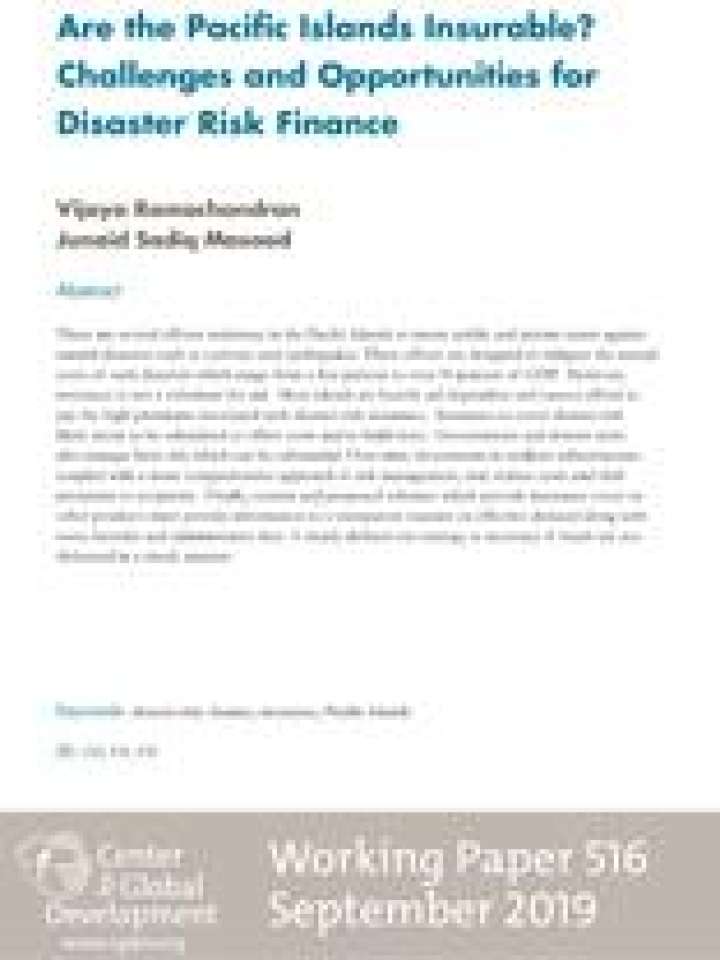Are the Pacific Islands insurable? Challenges and opportunities for disaster risk finance
There are several efforts underway in the Pacific Islands to insure public and private assets against natural disasters such as cyclones and earthquakes. These efforts are designed to mitigate the annual costs of such disasters which range from a few percent to over 50 percent of GDP. However, insurance is not a substitute for aid. Most islands are heavily aid dependent and cannot afford to pay the high premiums associated with disaster risk insurance. This report finds that insurance to cover disaster risk likely needs to be subsidized to offset costs and to build trust. Governments and donors must also manage basis risk which can be substantial. Over time, investments in resilient infrastructure, coupled with a more comprehensive approach to risk management, may reduce costs and shift premiums to recipients. Finally, the report argues that current and proposed schemes which provide insurance cover or other products must provide information in a transparent manner on effective demand along with costs, benefits and administrative fees. A clearly defined exit strategy is necessary if funds are not disbursed in a timely manner.
